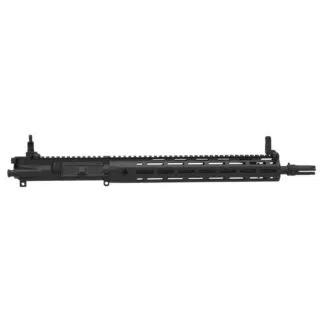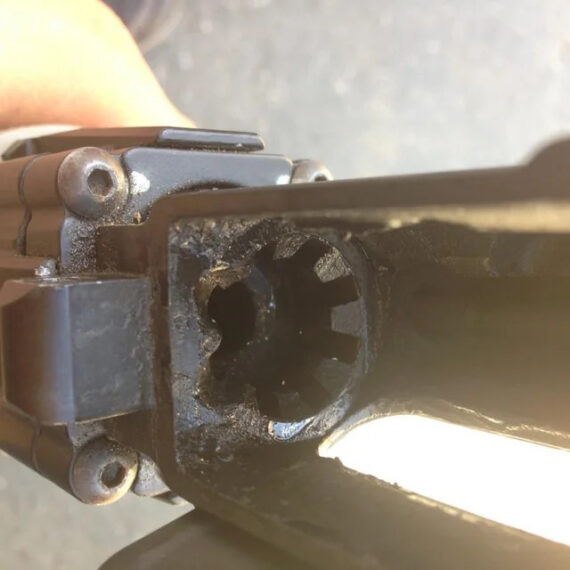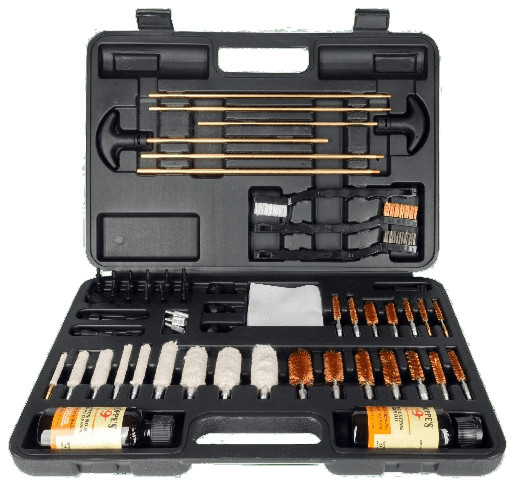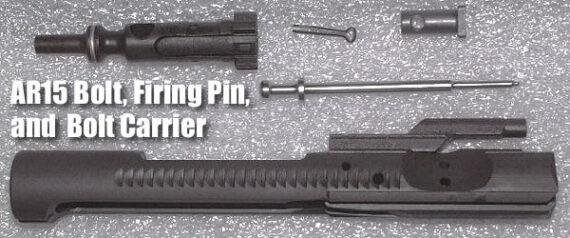Do’s and Don’ts of Cleaning Your AR-15: An Expert Guide
There are a lot of guides out there teaching people how to clean their AR-15. Many are full of great tips and tricks, while others would be better off never being published.
I’m not one of those shooters who shies away from cleaning firearms. I’ve made good money cleaning other people’s rifles and replacing parts as needed. If I had a penny for every time I’ve broken down an AR-15, I’d finally be able to afford the MARS-H I’ve been staring at for months.
I’ve seen what happens when you don’t clean your firearm correctly or if you don’t clean it at all. I’ve even had a gentleman come up to me, not knowing that he even had to clean his rifle.
More carbon buildup was on his firing pin and bolt face than the tar on the inside of a two-pack-a-day smoker’s lungs.
Sadly, I’ve seen worse. I’m here to make sure you don’t make the same mistakes.
Let’s dive in.
How Often Should You Clean Your AR-15?
How often you need to clean your AR-15 is a common topic where many new shooters get confused. Mostly, it depends on how often and how much you’re shooting. It also depends on your rifle.
I’ve seen a Knight’s Armament SR-15 go 20,000 rounds between cleanings. But I’ve also seen M&P15s fail from not being cleaned after only several magazines in a single range day.


I generally go 3,000 rounds between my AR-15 cleanings. Then again, I run my rifle with lots of lubricant so it can push past any gunk that may otherwise restrict function.
If you’re wondering how often you should clean your rifle, just think of how often you shoot. If you only shoot once every few months, cleaning your firearm after each range trip is a great way to ensure carbon doesn’t sit too long.
On the other hand, if you shoot frequently, you don’t have to clean it after every range trip. Just oil it up and keep running it until you think it needs to be cleaned.
This is what happens when you don’t clean your AR-15. Source: reddit
Cleaning Your AR-15
What You’ll Need
- Degreaser (I use Brake Cleaner or Slip 2000)
- Hoppe’s 9 Bore Snake
- Nylon Brushes
- Q-Tips
- Microfiber rags
- Lubrication (Both grease and oil)
Good starter kit from Hoppes 9. Source: cabelas
Areas To Focus On
- Firing Pin
- Bolt Tail
- Bolt Face
- Chamber
- The area around the gas tube
- Barrel
These areas are most likely to be affected by carbon deposits. Of course, ensure you wipe down all areas inside the upper receiver, the mag well, the buffer/buffer spring, and the buffer housing.
These parts need extra attention since they make the gun go boom. Source: accurateshooter
Do’s Of Cleaning Your AR-15
- Make sure it’s unloaded, and there is no ammo in your vicinity
- Clear off space and have a clean area to field strip it on so you don’t lose parts
- Use gloves
- Ventilate the area
- Place all of your pieces in a place they won’t get lost
- Use nylon brushes to remove built-up carbon
- Wipe down as much as you can with a microfiber towel
- Get the hard-to-reach spots with Q-Tips
- Ensure all the parts are dry to mitigate corrosion
- Use a Hoppe’s 9 Bore Snake to clean your barrel from chamber to muzzle
- Apply a thin film of grease to the high-friction areas.
- Inspect parts for cracks
- Perform a function check after you put your AR-15 back together
Don’ts Of Cleaning Your AR-15
- Don’t use metal brushes
- Don’t use water (can cause corrosion)
- Don’t over-oil it; it will mess up the foam in your case or safe and attract dirt.
- Use WD-40 or 3-in-1
YouTube Videos On How To Clean Your AR-15:
- How To Clean & Lubricate Your AR-15 Series Rifle (HD) Regular maintenance cleaning (after a range trip)
- How to Properly Clean and Lubricate an AR15 For a more in-depth cleaning after extended periods or excessive shooting
Mitigating Corrosion
One way to ensure your firearm lasts a long time is to mitigate corrosion. If you live in a wet climate like I do, you have to take some extra steps if you’re using your rifle outdoors and it’s exposed to moisture.
If you have water in and on your firearm, you must ensure it’s dry before storing it. A microfiber cloth will do the trick, but it must be completely dry, especially if any parts are chrome.
The outer surface of your AR-15 is meant to handle wet climates relatively well. That doesn’t extend to the interior, though. Even if the material is lauded for being corrosion-resistant, it’s safe to assume it’s not and should be dried anyway.
When storing your rifle in a safe, you should ensure that there is some moisture-absorbing material or a dehumidifier in the safe. Again, moisture is not your rifle’s friend.
Conclusion
Cleaning your AR-15 doesn’t have to be complicated. Just get yourself the proper equipment and focus on the areas that are directly involved in the firing of the round. Those are your dirtiest and most important areas. Everything else can be wiped down with a cloth or towel.
When using brake cleaner on your firearms, avoid getting it on any plastic, polymer, or rubber parts. If you spray-painted your rifle, avoid getting it on those areas, too, as the paint will come right off.
Remember to use your bore snakes in the direction your round is going, from the chamber and out.
Keep your AR-15 dry, clean, and well-lubricated, and it will serve you for a long time.
Be good and take care.


